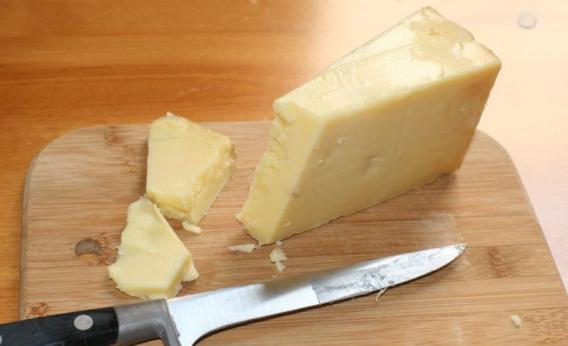Today is National Cheese Lover’s Day, so what better day to explore the economics of cheese. In broad aggregate terms, what you need to know is that America’s per capita cheese consumption is steadily rising but that the trend has perhaps leveled off as a result of the recession at around 33 pounds per person per year. In a global context, France delivers on stereotype by being the world’s largest consumer of cheese at over 52 pounds per person per year, followed by Germany. I think it’s usually enlightening to compare the US to our fellow Anglophone settler societies, and we eat much more cheese than Canadians or Australians.
But to get down to grittier economic analysis, cheese is another example of the holiday pricing anomaly that exists around Thanksgiving. Cheese purchases spike in December as people buy it for Christmas and New Year’s gatherings. But the demand explosion is associated with a fall in the average price of cheese, because people buy cheaper stuff. True cheese lovers make up a larger share of the market at non-peak times and thus push the price/quality up. This phenomenon is best studied regarding canned tuna and lent, but also exists for beer at the 4th of July and other things.
The most interesting element of cheese-onomics, however, probably relates to the regulatory issues. Those in the know, for example, are well-aware that the flavor of real parmigiano-reggiano cheese is not to be compared to mere parmesan. In a regulatory sense, one of the main differences is that parmigiano-reggiano cheese can be made only in Emilia-Romagna in Italy. The superior flavor, however, almost certainly derives not from the specific geography of the area but from the cheese-making process which involves, among other things, a lot of aging to develop that rich nutty flavor. Aging your cheese is, of course, expensive. It needs to be stored and your capital is tied up in a not-very-liquid manner. So to make it economically viable to produce a fine aged cheese outside of Emilio-Romagna you’d need to be able to charge a nice price premium. And yet it’s not clear you could get away with this even if your quality was every bit as good as the average wheel of parmigiano-reggiano. That’s because people in the know have been trained to keep our eyes peeled for cheese that carries the parmigiano-reggiano label, and outside the region you just can’t get the label.
Contrast that situation with the case of cheddar cheese. Cheddar originates in a specific portion of England, but the name was in such wide use that they were denied Protected Designation of Origin status. Instead, that part of England has exclusive rights to the name “West Country Farmhouse Cheddar.” But cheddar, too, comes in a variety of qualities with quality linked to the length of aging. Since claims about the age of cheese are regulated, but there’s no PDO, anyone can enter the market and credibly claim to offer a 2-year or 5-year or whatever-year aged cheese. And so you’ll find at your local supermarket a variety of cheddar cheeses at a variety of different price/age/quality points.
